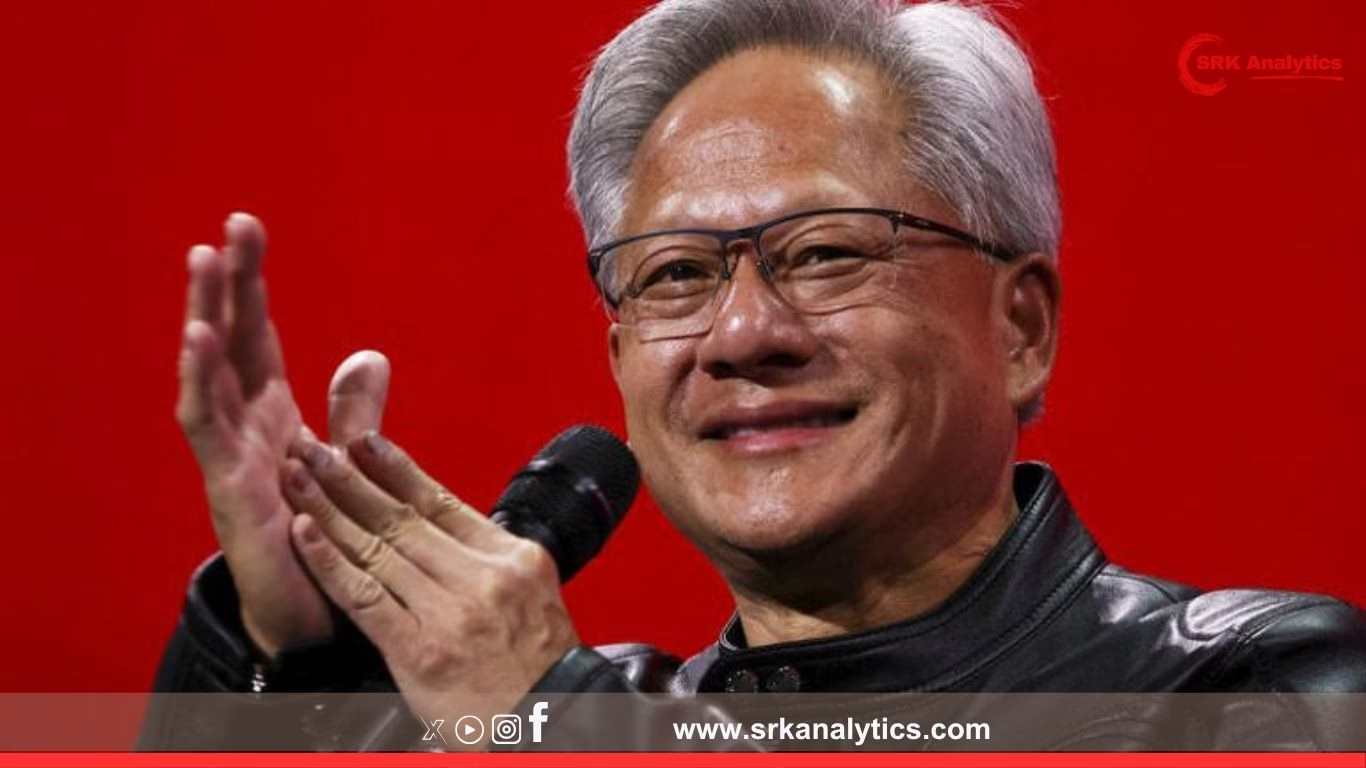In a historic milestone for the global technology sector, semiconductor giant Nvidia has surpassed the $4 trillion market capitalisation mark, becoming the world’s most valuable publicly traded company. This remarkable ascent places it ahead of tech titans Apple and Microsoft, reinforcing Nvidia’s position as the dominant player driving the artificial intelligence (AI) revolution.
The journey to $4 trillion
Nvidia’s market capitalisation crossed the $4 trillion threshold during intraday trading on Wall Street as its shares surged by nearly 5% to an all-time high of $1,622. The stock has more than doubled since January 2025 and witnessed a nearly 200% gain over the past year, propelled by unprecedented demand for its AI chips and accelerated computing solutions.
Founded in 1993 by Jensen Huang, Chris Malachowsky, and Curtis Priem, Nvidia initially specialised in graphics processing units (GPUs) for gaming. Over three decades, it has transformed into a leader in GPU-accelerated AI workloads, cloud computing, data centres, and autonomous systems, now defining the core infrastructure of modern artificial intelligence.
AI boom fuels Nvidia’s meteoric rise
The latest surge in Nvidia’s stock price comes on the back of record quarterly earnings and a strong outlook driven by exponential demand for its flagship data centre AI chips, including the H100 and the new Blackwell GPU architecture.
The AI boom has seen global tech firms, cloud service providers, and enterprises across sectors lining up for Nvidia’s chips to power large language models, generative AI, autonomous systems, and advanced scientific computing. Analysts state Nvidia has created a near-monopoly in the AI chip market with over 80% market share.
| Key Financial Highlights (Q2 FY25) | Performance |
|---|---|
| Revenue | $26.2 billion (+248% YoY) |
| Net Profit | $15.8 billion (+320% YoY) |
| Data Centre Revenue | $22.5 billion (+300% YoY) |
| Gaming Revenue | $3.2 billion (+35% YoY) |
| Gross Margin | 78% |
Jensen Huang, co-founder and CEO, said, “We are witnessing the beginning of a new industrial revolution driven by AI. Nvidia is positioned at the core of this transformation as every company seeks to integrate generative AI to enhance productivity, efficiency, and innovation.”
Comparison with Apple and Microsoft
Nvidia’s valuation now surpasses that of Apple and Microsoft, which stood at approximately $3.2 trillion and $3.5 trillion respectively at Tuesday’s close. This marks the first time a semiconductor firm has become the world’s most valuable company, symbolising a shift in investor preference from traditional hardware and software to AI infrastructure providers.
| Company | Market Cap ($ Trillion) | Primary Growth Driver |
|---|---|---|
| Nvidia | 4.0 | AI chip demand, data centres |
| Microsoft | 3.5 | Cloud services, AI software integration |
| Apple | 3.2 | Hardware ecosystem, services |
Brokerages remain bullish on Nvidia
Major global brokerages including Goldman Sachs, Morgan Stanley, and Citi have reiterated bullish calls on Nvidia, increasing their price targets further. Analysts project Nvidia’s market cap could touch $5 trillion by the end of 2025 if the AI boom maintains momentum.
Goldman Sachs raised its price target to $1,900 citing robust AI chip orders and expanding customer pipeline across hyperscalers and large enterprises. Morgan Stanley highlighted Nvidia’s near-impenetrable dominance in high-end AI chips and software frameworks as the key competitive moat.
Strategic investments and global partnerships
Nvidia is not resting on its laurels. The company recently announced:
- New AI chip plants in Taiwan, US, and Europe to meet explosive demand.
- Strategic partnerships with Microsoft, Google, Amazon, and Meta for AI cloud infrastructure.
- Expansion into AI software with the Nvidia AI Enterprise Suite, targeting end-to-end AI workflows.
- Development of autonomous vehicle platforms in collaboration with Tesla, Mercedes-Benz, and BYD.
Implications for the semiconductor and AI industry
Nvidia’s rise underscores the massive value creation potential in AI infrastructure and semiconductors. Analysts predict that global AI chip spending will cross $100 billion annually by 2027, with Nvidia remaining the prime beneficiary.
Moreover, Nvidia’s success is boosting upstream suppliers such as TSMC and ASML, while intensifying competition with AMD and Intel, who are accelerating their AI chip roadmaps to narrow the technological gap.
Potential risks ahead
Despite its meteoric rise, experts caution that Nvidia faces risks including:
- Supply constraints amid surging orders.
- Geopolitical tensions around chip export regulations, especially US-China restrictions.
- Intensifying competition as rivals invest heavily in next-gen AI hardware.
However, its robust order pipeline, technological lead, and strong balance sheet are expected to mitigate near-term threats.
Disclaimer
This article is for informational purposes only and does not constitute investment advice. Readers are advised to consult their certified financial advisor before making any investment decisions.











